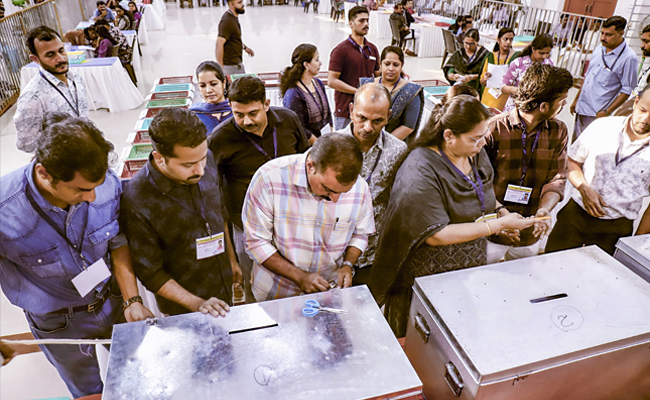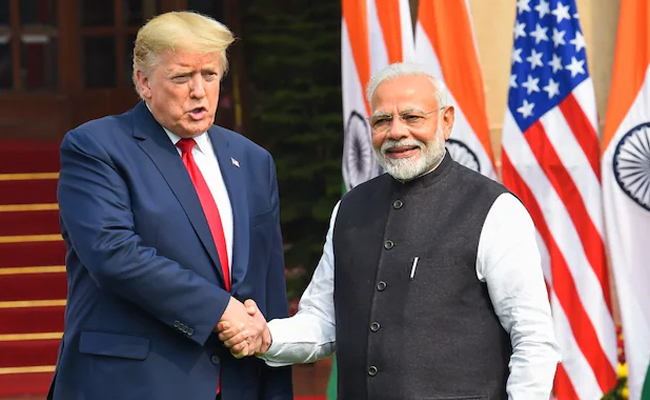New Delhi, Aug 28: The WHO has recently said the current outbreak of the Chandipura virus in India is the largest in 20 years.
According to the global health body, between early June and August 15, the Ministry of Health reported 245 cases of AES (Acute Encephalitis Syndrome), including 82 deaths (case fatality rate or CFR 33 per cent).
A total of 43 districts in India are currently reporting AES cases.
Of these, 64 are confirmed cases of the Chandipura virus (CHPV) infection.
"CHPV is endemic in India, with previous outbreaks occurring regularly. However, the current outbreak is the largest in the past 20 years," the World Health Organisation (WHO) said in its Disease Outbreak news on August 23.
CHPV is a member of the Rhabdoviridae family and is known to cause sporadic cases and outbreaks of AES in western, central and southern parts of India, especially during the monsoon season.
Cases are sporadically present across various districts as in previous outbreaks. Notably, there is a rise in CHPV outbreaks every four to five years in Gujarat.
It is transmitted by vectors such as sandflies, mosquitoes and ticks. The CFR from the CHPV infection is high (56-75 per cent) and there is no specific treatment or vaccine available.
"Survival can be increased with early access to care and intensive supportive care of patients," the WHO said.
Surveillance efforts should be enhanced in high-risk areas, focusing on people at risks, such as children below 15 years of age presenting with acute onset of fever and central nervous system symptoms, it said.
It is important to ensure that laboratory diagnostic capacities are available, including for timely collection, transport and testing of serum and cerebrospinal fluid samples for serological and virological investigation at a referral laboratory, the WHO said.
A declining trend in the number of new AES cases has been observed daily since July 19, it added.
To date, no human-to-human transmission has been reported.
In 2003, a large outbreak of AES was reported in Andhra Pradesh, with 329 suspected cases and 183 deaths. A study suggests that this was due to CHPV.
Although authorities are working to control CHPV transmission, further transmission of the virus is possible in the coming weeks as the monsoon season is creating favourable conditions for vector populations in the affected areas.
The WHO recommended vector control and protection against the bites of sandflies, mosquitoes and ticks to prevent the further spread of CHPV.
Highlighting the control and prevention measures, the WHO said the Union health ministry has deployed a National Joint Outbreak Response Team (NJORT) to assist the Gujarat government in undertaking public health measures and for conducting a detailed epidemiological investigation into the outbreak.
Comprehensive insecticidal spraying and fumigation are being carried out to control vectors, such as sandflies, that transmit the virus.
Initiatives are underway to provide information to the public and medical personnel about the virus, its symptoms and preventive measures.
The WHO further said the Gujarat Biotechnology Research Centre (GBRC) is actively researching to identify other viruses causing encephalitis and is closely monitoring the situation.
Let the Truth be known. If you read VB and like VB, please be a VB Supporter and Help us deliver the Truth to one and all.
Thiruvananthapuram (PTI): Buoyed by the strong performance of the Congress-led UDF in the local body polls, KPCC president Sunny Joseph said on Saturday that the front's results indicated the people had rejected the LDF government.
According to early trends, the UDF was leading in more grama panchayats, block panchayats, municipalities and corporations than the LDF.
The local body polls were held in two phases in the state earlier this week.
ALSO READ: Cong candidate who moved Kerala HC for name reinstatement in voter list, wins
Speaking to reporters here, Joseph said the people of Kerala had extended their support to the UDF.
"We could expose the LDF government’s anti-people stance and the people understood it. The LDF’s fake propaganda was rejected by the people. The UDF is moving towards a historic victory," he said.
He said a united effort, proper preparations, good candidate selection and hard work had resulted in the Congress and the UDF’s victory in the elections.
Asked about the prospects in the Thiruvananthapuram Corporation, Joseph said the party was studying the matter and would comment later.
LDF convenor T P Ramakrishnan said the results would be closely examined.
According to him, the government had done everything possible for the people.
"Why such a verdict happened will be examined at the micro level. People’s opinion will be considered and further steps will be taken," he said.
He added that decisions would be taken after analysing the results. "If any corrective measures are required, we will initiate them and move forward," he said.
AICC leader K C Venugopal said the results showed that people had begun ousting those who, he alleged, were responsible for the loss of gold at Lord Ayyappa’s temple.
"This trend will continue in the Assembly elections as well. It is an indication that the people are ready to bring down the LDF government," he said.
Venugopal said the UDF had registered victories even in CPI(M) and LDF strongholds.
"I congratulate all UDF workers for their hard work. Congress workers and leaders worked unitedly," he said.
Referring to remarks made by Chief Minister Pinarayi Vijayan against the Congress on polling day, Venugopal said the voters had responded through the verdict.
"I do not know whether the chief minister understands that the people are against him. Otherwise, he does not know the sentiment of the people. The state government cannot move an inch further," he said.
He said the results indicated a strong comeback for the UDF in Kerala.
Asked whether the Sabarimala gold loss issue had affected the LDF in the local polls, Venugopal said the CM and the CPI(M) state secretary did not take the issue seriously.
"We took a strong stand on the matter. The BJP played a foul game in it," he alleged.
On the BJP's role in the local body elections, Venugopal alleged that the party operated with the CPI(M) 's tacit support.
"The CPI(M) supported the central government on issues such as PM-SHRI, labour codes and corruption in national highway construction. The CPI(M) is facing ideological decline, and the state government’s policies are against the party’s own decisions," he said.
Meanwhile, LDF ally Kerala Congress (M) leader Jose K Mani said the party could not win all the wards it had expected in the elections.
He congratulated winners from all parties and said the party would closely examine the losses and identify shortcomings. "Later, we will take corrective measures," he added.
Senior Congress leader and MP Rajmohan Unnithan said the trends in the local body elections indicated that the UDF would return to power in the 2026 Assembly elections.
"We will win 111 seats as in 1977 and return to power in 2026. The anti-government sentiment of the people is reflected in the elections," he said.
Unnithan said the people were disturbed and unhappy with the present government.
"The trend indicates the end of the LDF government," he added.
CPI(M) MLA M M Mani said the people had shown ingratitude towards the LDF despite benefiting from welfare schemes.
"After receiving all welfare schemes and living comfortably, people voted against us due to some temporary sentiments. Is that not ingratitude," he asked.
Mani said no such welfare initiatives had taken place in Kerala earlier.
"People are receiving pensions and have enough to eat. Even after getting all this, they voted against us. This is what can be called ingratitude," he said.
Muslim League state president Panakkad Sayyid Sadiq Ali Shihab Thangal said the results were beyond expectations.
"The outcome points towards the Secretariat in Thiruvananthapuram, indicating that a change of government is imminent. We are going to win the Assembly election," he said.





